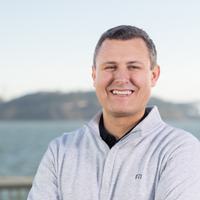
The Pathway of Seafood Banker to Operator to Oceans Investor

My career has always centered around identifying what is undervalued and overlooked in the oceans sector. Spending over two decades in the seafood and finance industries, on both the investment and operational sides, I’ve witnessed firsthand the shifts in our oceans and the urgent need for change.
Starting initially as a tech-focused investment banker, I transitioned to leading KeyBanc Capital Markets’ seafood-focused investment banking group for over a decade. With few financial institutions specializing in this area, the customer base expanded globally throughout the value chain; predominantly in mergers and acquisitions and capital raises. Following KeyBanc, a major turning point came as I began my tenure at Silver Bay Seafoods in Alaska. As the CFO and a shareholder, I saw the potential for scaling modern operational techniques, increasing resource efficiencies and leveraging access to capital to accelerate growth and responsibly transform an underutilized natural asset into a thriving enterprise. However, it was impossible to ignore the alarming environmental changes taking place around us.
It was clear that the economic value being created throughout this industry was tied to an asset base that was in decline. Ocean acidity was on the rise, water temperatures were climbing, and harmful algae blooms became frequent disruptors. In Bristol Bay, the world’s largest sockeye fishery, water temperatures spiked by 10 degrees Fahrenheit in just one year. This drastic change disrupted the salmon’s life cycle, reducing their size and yield. This wasn’t an isolated incident; it mirrored a global crisis affecting marine ecosystems.
I also found there was very little awareness of the power of our oceans in regulating climate. Our oceans have a far greater capacity than land to store heat. Over the past sixty years, they have absorbed more than 90 percent of the heat produced by fossil fuel combustion and other human activities. But this heat accumulation is substantially impacting the biodiversity and productivity of our oceans — leading to rising sea levels, coral bleaching and other devastating effects.
Recognizing this, I joined S2G with a mission to protect and restore our oceans through strategic investment. Through the launch of our Oceans strategy, we have seen that catalyzing capital toward sustainable ocean projects can help counteract the adverse effects of climate change and support a burgeoning blue economy.
Moreover, we’ve learned that integrating ocean health into broader investment strategies across the food, agriculture, and energy sectors can create synergies that amplify positive outcomes. As climate change continues to alter global ecosystems, the interconnectedness of these sectors becomes increasingly apparent. A holistic approach that takes into account cross-sector learnings ensures that efforts in one area support and enhance outcomes in another, maximizing the overall benefit.
The urgency of action cannot be overstated. The economic value tied to declining ocean assets underscores the need for immediate and sustained investment in ocean health.
Failure to act will not only exacerbate environmental degradation but also pose significant risks to global economic stability.
I am seeing an increased awareness and call to action not only within the blue economy but also among corporations, investors, governments and the general public. This gives me hope for the most crucial asset which we all share and depend upon. Having said that, its not enough to meet the goals which need to be achieved by 2030 and 2050. I encourage everyone reading this to engage, learn more about the sector and drive progress for our Oceans, our planet and future generations.

